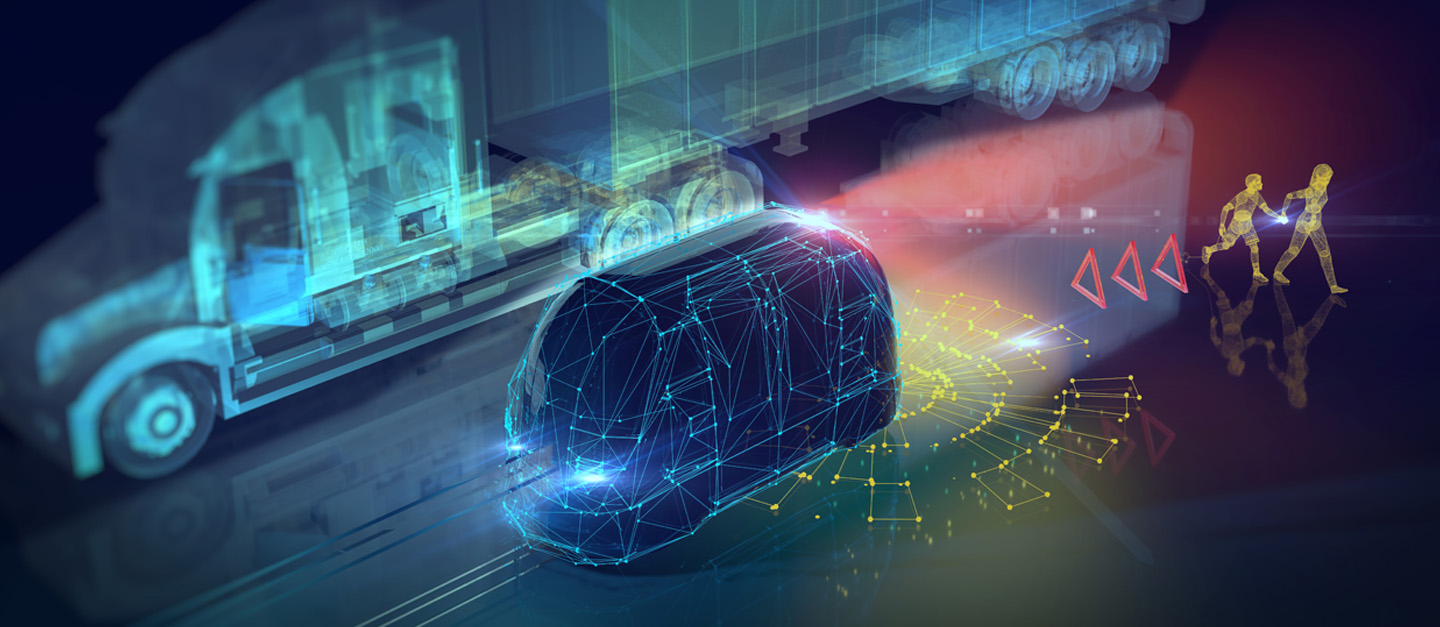Transportation technology is evolving at a rapid pace. True: delivery drones may still be in their infancy, widespread adoption of fully autonomous cars is 5-10 years away, and electric vehicle adoption hasn’t yet hit scale. However, these technologies are already starting to transform our cities and our lives. We caught up with Caitlin Walsh – Senior Portfolio Manager in CPP Investments’ Thematic Investing group, to learn more about the major issues shaping the future of automobility.
Spies start your engines: “AVs (autonomous vehicles) are like a Bond villain’s dream come true, because of the massive amount of data they collect about everything and everyone around them,” explains Walsh. Stored in the trunks of these vehicles, mini-data centres constantly process all the inputs from their multiple sensors. The data is currently used to improve driving software and improve route optimization. However, there’s a huge opportunity for urban and transit planners to tap into this information to make smarter decisions, for example – where to put a new bus stop or build a new bike lane. The big outstanding questions are: who owns this data and how can it be shared and leveraged?
Fast Fact: AVs generate a full terabyte of data per hour, per car. That’s the equivalent of 400 hours of HD movies.
Cheap rides, traffic woes: While some predict that autonomous vehicles could drastically reduce the number of cars on the highway (by as much as 80%!), there is no guarantee that more AVs will equal fewer traffic jams. “If AV fleets become cheaper than public transit, for example, congestion could increase,” says Walsh. “Cheaper, driverless hail services, while making car ownership less attractive, could also disincentivize public transit use.” Imagine what would happen, for example, if the 400,000 people who use San Francisco’s BART system everyday decided to jump in a driverless taxi instead. This scenario isn’t lost on local transit planners, who are contemplating what a shift from transit to automated fleets could mean for infrastructure. The challenge will be ensuring that AV mobility services complement rapid public transit, rather than outcompete it.
Fast Fact: A driverless taxi could cost you less than a dollar per mile.
Robot dog delivery, at your service: “Packages, unlike people, can’t complain about their route,” jokes Walsh. What matters to senders and receivers is: cheap, fast, and convenient. As a result, the biggest impact transportation technology may have on our lives is in the realm of goods delivery. We are already seeing companies like Uber Eats gain worldwide traction. Subtract the driver, and that service gets cheaper and more attractive. It’s hard to understate the rapid growth we’re seeing in this field. As McKinsey outlines: options like autonomous and electric vans, which were largely conceptual a few years ago, are already being piloted. Delivery by droid, drones, and – yes – robotic dogs are all real, and in some cases functioning, options.
Fast Fact: Matternet and Swiss Post have been testing an autonomous drone network over Switzerland that transports diagnostic samples and medical items between healthcare facilities.
It’s all about getting the climate right: EV (electric vehicle) and AV technology aren’t developing in silos. Why? “An increased global focus on mitigating emissions in urban areas is a key factor,” answers Walsh. Ultra-low emission zones in cities like London, Madrid, Paris, Athens, and Mexico City will soon make diesel-fueled delivery vehicles off-limits. In fact, McKinsey predicts that the first wave of technology that will truly transform “last-mile” goods delivery will be both driverless and electrified. The other driving concern (pun intended) is that a full-life cycle assessment of AVs suggests that – in the absence of EV integration – driverless vehicles could actually increase emissions by as much as 20% (blame: power consumption, weight, drag, and data transmission). In the context of an increasingly carbon-conscious future, that’s a risk worth nipping in the bud.
Fast Fact: According to a recent study, AEVs can potentially reduce emissions by over 80% compared to gasoline vehicles with AV integration.
So much depends on policy: “The impact of new transportation tech on our lives, cities, and economies rests largely in the hands of policy-makers,” says Walsh. AVs will help solve, rather than exacerbate, traffic congestion only if there are smart incentives and solutions in place that limit individual ridership. EVs and AVs will only help solve pollution issues if policy decisions prioritize that outcome. Driverless cars and delivery could make our roads safer and cities more livable – but only if we channel the data they generate, and manage the way they operate, to serve this ambition. Singapore, a leader in AV adoption, has already started down this path. New rules guide everything from the time and space limits on trials, to design standards, to data sharing. “The trick,” says Walsh, “is getting the balance right – creating a policy environment that channels the best potential of this new technology, without hampering innovation.”
Fast Fact: In Singapore, the human driver of an AV is not responsible for the safe use of the vehicle on the road.




